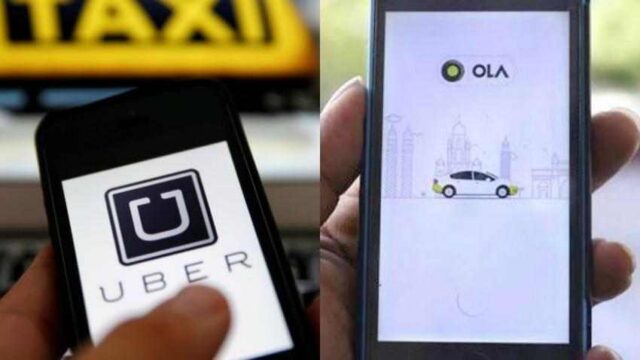Ride-hailing apps like Ola and Uber have been running unregulated on the streets of India, occasionally surging prices by three times the base fare, getting away with ill-equipped drivers, and functioning unchecked for years.

But now, the government has come forward with guidelines for cab aggregators, officially bringing them under the purview of the Motor Vehicles (Amendment) Act, 2019.
Motor Vehicles (Amendment) Act
The Ministry of Road Transport and Highways issued guidelines to regulate cab aggregators. The guidelines are regarding granting licenses, regulation of prices, health insurance, commission, data shared on the ride-hailing apps and more.
The guidelines also defined an aggregator as “a digital intermediary or market place for a passenger to connect with a driver for the purpose of transportation.”
According to the Act, the aggregators will have to be granted licenses by the state governments to run their businesses.
Also Read: FlippED: Is Buying A Car Better Than Using Cab Services Like Ola/Uber? Our Bloggers Fight It Out
What Changes Are Taking Place?
Limits on surge pricing: The government has essentially put a cap on the maximum surge pricing that can be done by cab aggregators. From now on, cab aggregators cannot charge more than 1.5 times the base fare. They are also not to provide discounts of more than 50% of the base fare.
Ride-sharing: For female passengers, aggregators will have to provide the option for women-only passengers in case of ride-sharing.
Commission: The payment of the ride would be split 80/20 which means that drivers would receive 80% of each fare and aggregators can receive a maximum of 20% of the fare.
Cancellation: From now on, if a ride is cancelled either by the driver or the passenger without sufficient reason, the cancelling party will have to pay 10% of the fare, with Rs. 100 as the maximum amount payable.
24×7 control room: All vehicles must have contact with a 24×7 control room set up the aggregator which will be available for assistance at all times.
Language: The app must be available in Hindi, English and the regional language of the states in which Hindi is not the commonly used language.
Health Insurance: Every driver must be provided with health insurance of minimum Rs. 5 lakh, with the amount increasing by 5% every year,
Training: In addition to compulsory training before working for the aggregators, drivers will also have to undergo yearly refresher training, involving first-aid, using the app properly, maintenance of the vehicle, and being up to date with the Motor Vehicles Act.
“New guidelines will help in clearing uncertainty regarding regulation of cab aggregators in India. India, being one of the largest market globally, has huge long term potential and it will continue to attract investment from global players,” said Ashish Modani, vice president of the ICRA.
While many think that the guidelines come as a welcome relief to the aggregator industry, many fear that companies like Uber and Ola will suffer due to the rules, especially considering the added restrictions and loss of revenue due to the pandemic.
Image Credits: Google Images
Sources: Indian Express, Times of India, Business Standard
Find the blogger: @RoshniKahaHain
This post is tagged under: Uber India, Ola cabs, motor vehicle act, transport ministry guidelines, uber ola guidelines, meru cabs, cab price surge, women only car pooling, ride sharing, what happens if you cancel ride on app, price fro cancelling ride, cab aggregator apps India
Other Recommendations:
Why Do Ola/Uber Drivers Cancel Rides Last Moment: Here’s How They Feel